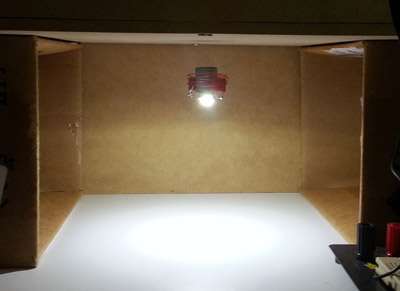LevLight: Student's floating light invention gets glowing reviews (w/ video)

(Phys.org) -- A levitating light bulb invented by a 19-year-old student from the University of Queensland has been singled out as an exciting industry innovation by an American lighting firm.
Chris Rieger's invention LevLight, which hovers below a ceiling while glowing, has been viewed more than 330,000 times on You Tube, spawning features by the UK's Daily Mail and numerous international technology blogs.
Now UQ lighting company Bulb America says they are keen to see how the innovative project might shape up for commercial production here.
Mr Rieger's device combines wireless power transfer and magnetic levitation, a combination of the two technologies that is believed to be an industry first.
“This project came to life when I saw Jeff Lieberman's implementation of it a few months before starting my prototype,” he said.
“I was fascinated and started research on building my own, reading up on pretty much every project that included wireless power transfer or magnetic levitation.”
A second year electrical engineering student, Mr Rieger said he worked on it for about six months while studying at university.
“What I found is that there are many existing projects of both wireless power transfer or magnetic levitation, but only a few have combined both these technologies,” he said.
“Once you have both working, it's really just a matter of overlaying them. The high frequency magnetic field generated from the wireless power transfer circuit does not affect the levitation aspect of the build.”
The budding inventor has already begun work on a new and improved prototype of the LevLight, featuring a new levitator, which is designed to have greater strength and a better control system.
Provided by University of Queensland



















